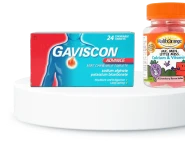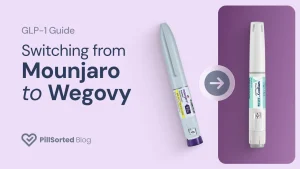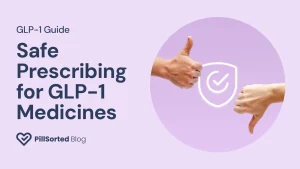Basics of Injectable Weight Loss Medications
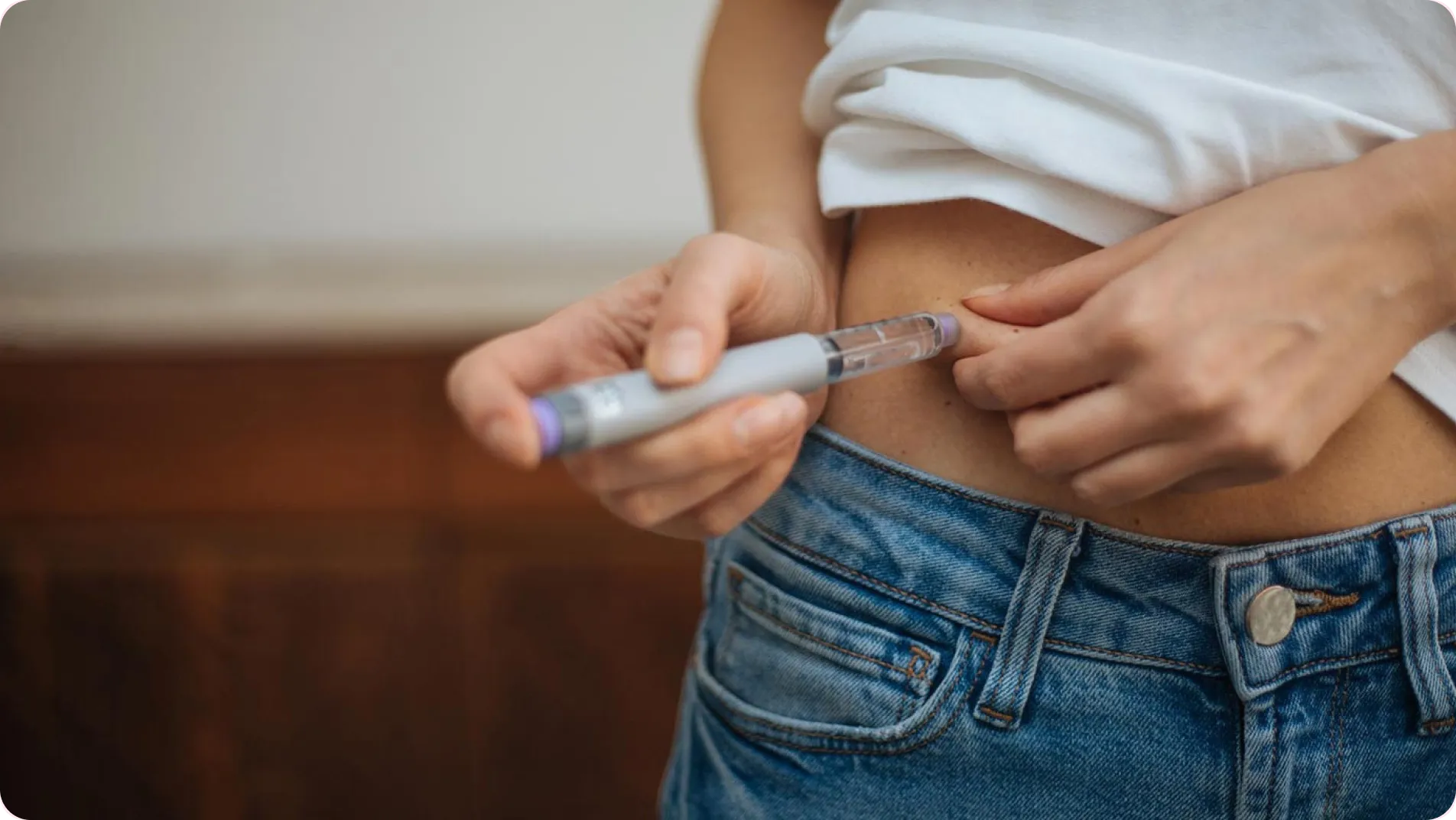
New to weight loss injections? Starting a new medication can feel like a big step, especially when it involves an injection. Whether you’ve just been prescribed treatment or you’re still deciding if they’re right for you, this guide to The Basics of Injectable Weight Loss medications (Mounjaro & Wegovy) will walk you through the essentials.
We’ll cover how these medications work, how to use your injection pen properly, what side effects to look out for, and a few practical tips we always share with our patients. It’s all here to help you feel more confident and get the most from your treatment.
In this guide
- How Do Mounjaro and Wegovy Work?
- Using Your Pen: The Basics
- Side Effects & Safety Considerations
- Key Things to Remember
- Final Tips
How Do Mounjaro and Wegovy Work?
Let’s start with what these medications actually do, and why they’ve become such a powerful tool for long-term weight management.
Both Mounjaro (tirzepatide) and Wegovy (semaglutide) are weekly injections that work with your body’s natural hormones to regulate appetite, digestion, and how you process energy.
They support weight loss in two key ways:
1. They help reduce appetite
These medications act on your brain’s appetite centre, helping you feel full sooner and for longer. This makes it easier to eat less without constantly feeling hungry.
2. They help your body use calories more efficiently
They also help your body manage blood sugar and energy use by increasing insulin release after meals. That means fewer energy crashes, more stable blood sugar, and less fat storage.
Studies show, when used consistently alongside healthy lifestyle changes, they support gradual, long-term weight loss that many people struggle to achieve through diet and exercise alone.
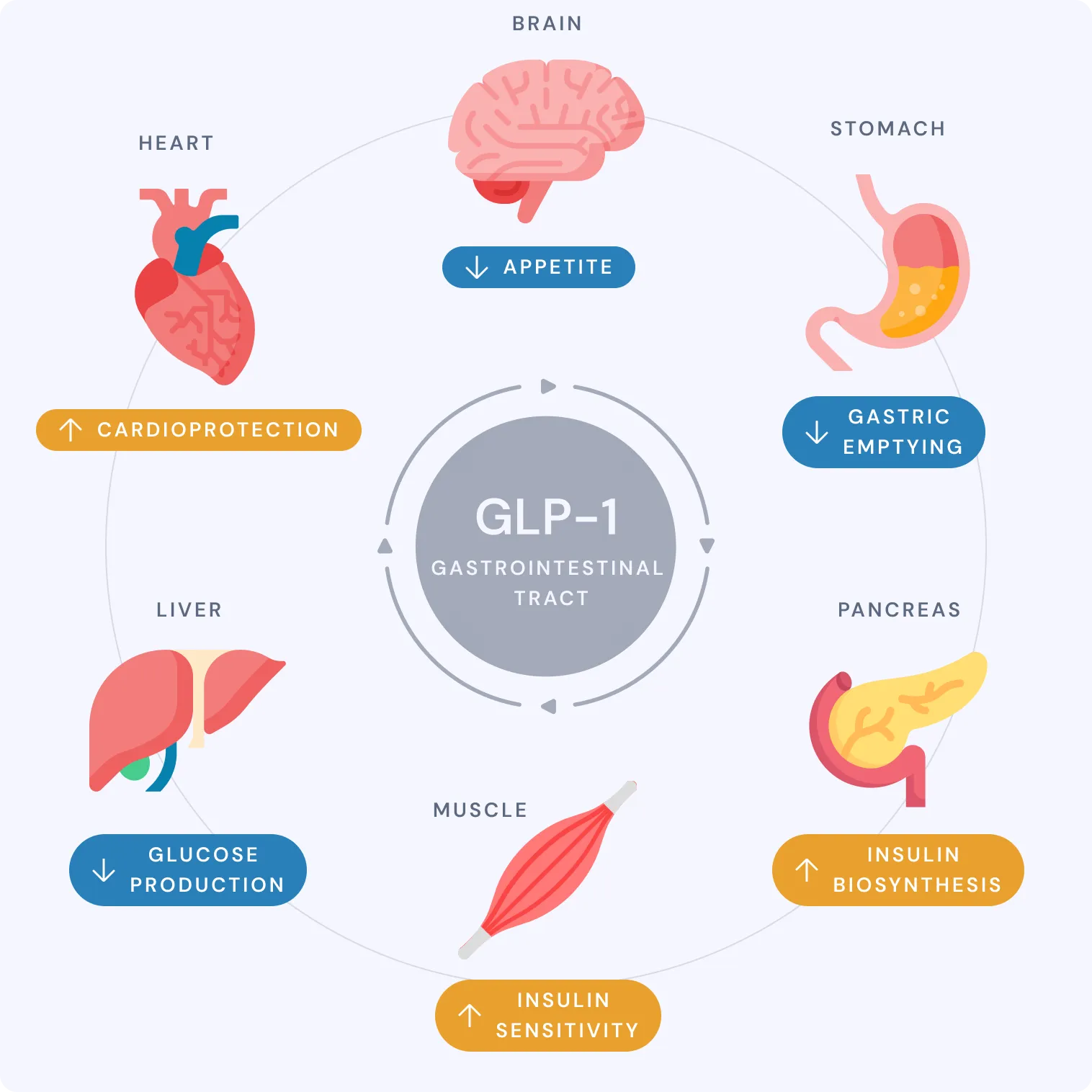
Using Your Pen: The Bascis
Don’t worry if you’ve never given yourself an injection before. Most people feel a bit unsure at first. With a bit of practice, it becomes second nature. Here’s what we at PillSorted usually walk patients through when they’re getting started:
1: Preparing
- Wash your hands
- Check your pen for damage or expiry
- Choose your injection site (abdomen, thigh, or upper arm)
- Have your sharps bin ready — never leave the needle exposed
2: Attach the needle & prime the pen
- Attach the needle securely
- Take off the pen cap, and if there’s a second little cap over the needle, remove that too before injecting
- Gently tap the pen (or flick with your nail) to move air bubbles to the top
- Prime the pen if advised — this ensures you get the correct dose
3: Injecting
- Insert the needle at a 90° angle
- Press and hold the injection button
- Hold it there until the clicking stops — this means the full dose has been delivered
4: Aftercare
- Replace the needle cap
- Dispose of the needle safely in your sharps bin
- Record the date in your tracker or calendar
📺 Want a demo?
Always follow the instructions in your leaflet. If anything feels unclear, your PillSorted pharmacist is here to help.
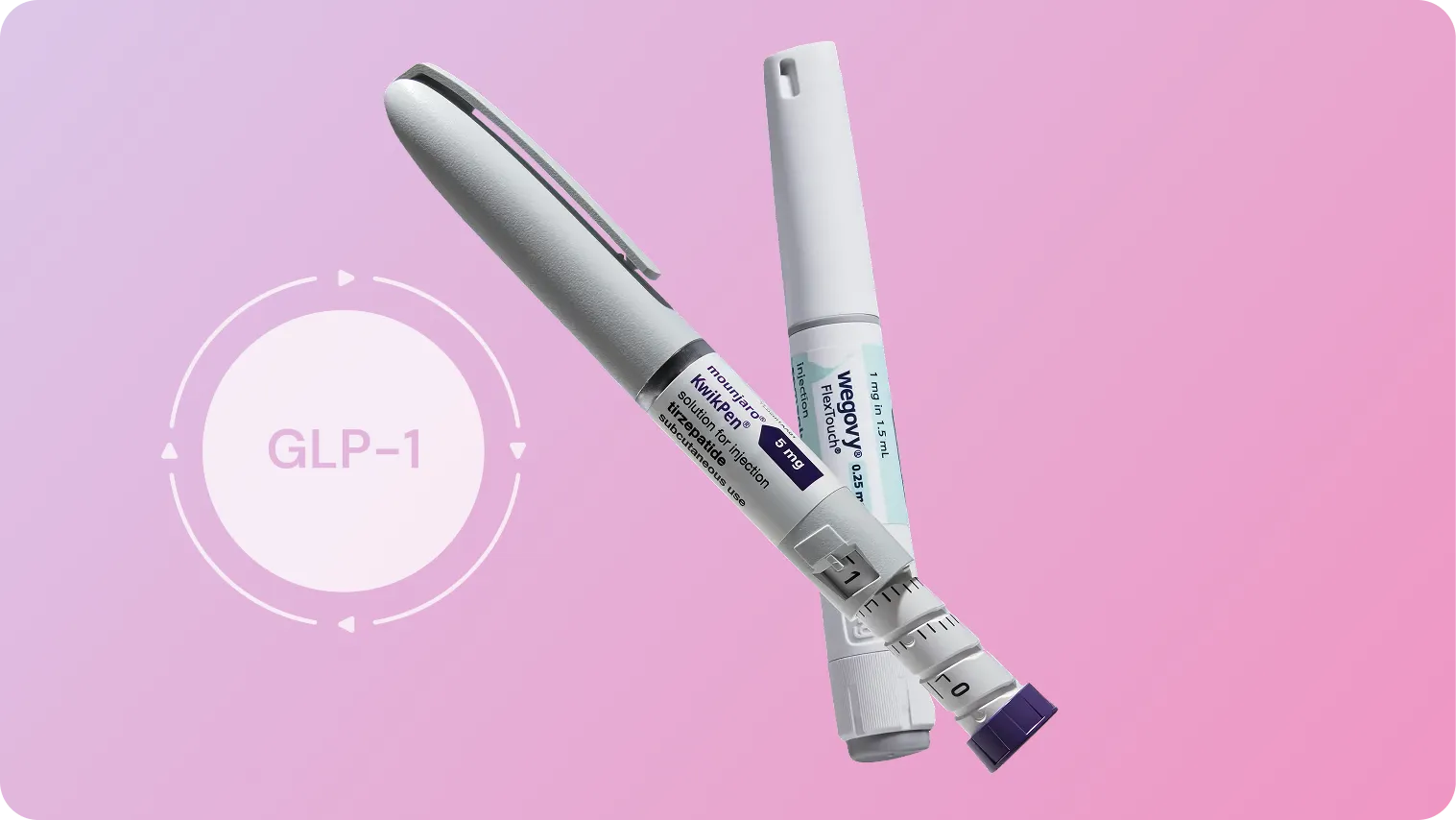
Key Things to Remember
Dosing & timing
- Inject once a week, on the same day each week.
- Many patients find Sunday evenings or Monday mornings easiest to remember. Set a phone reminder if it helps.
Rotate your injection sites
To avoid soreness or irritation, switch between areas like:
- Abdomen (most common)
- Outer thigh
- Upper arm (if someone else is injecting)
Keep a note of where you’ve injected each week.
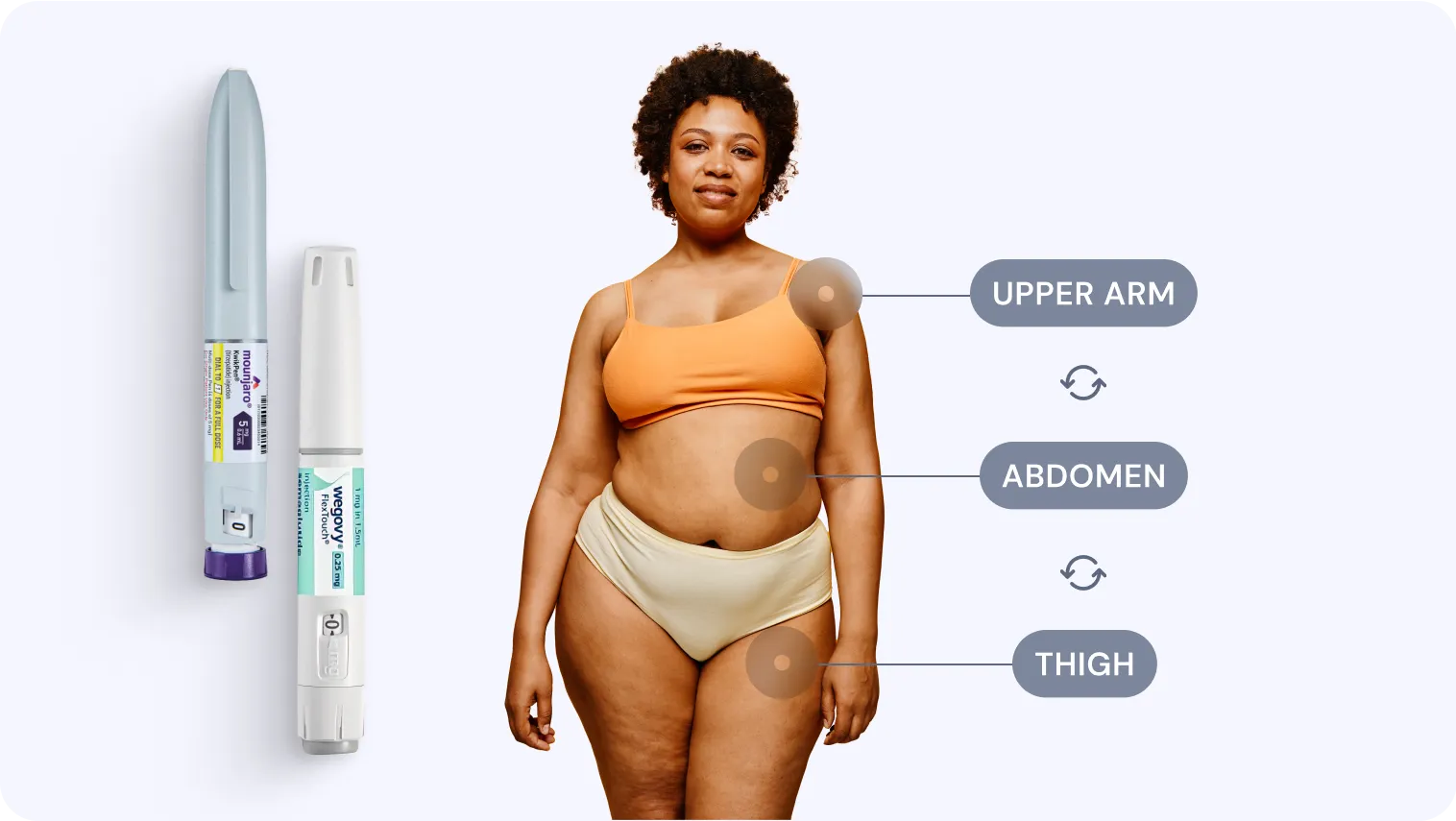
Storage Guidelies
| Condition | Mounjaro | Wegovy |
|---|---|---|
| Unopened | 2°C to 8°C (fridge) | 2°C to 8°C (fridge) |
| Opened / In use | Room temp 15°C–30°C for up to 30 days | Room temp 15°C–30°C for up to 6 weeks |
| Avoid | Heat, freezing, direct sunlight | Heat, freezing, direct sunlight |
Side Effects & Safety Considerations
Like any medication, GLP-1 injections can cause side effects. Most are mild and go away as your body adjusts. However, some are more serious and should be addressed immediately.
Common GLP-1 Side Effects (usually settle over time)
- Nausea & vomiting
- Diarrhoea
- Constipation or abdominal pain
These are most likely to occur when starting or increasing your dose, and often settle within a few weeks.
⚠️ Uncommon but important to watch for (seek medical advice):
- Pancreatitis – severe, persistent stomach pain (can radiate to the back)
- Kidney or bladder stones – lower abdomen pain, trouble urinating
- Gallbladder issues – pain in the upper right side of the abdomen
- Diabetic eye complications – especially if you have diabetes already
🚨 Rare but serious (get help immediately):
- Severe allergic reactions (anaphylaxis, angioedema)Symptoms may include: difficulty breathing, swelling of lips/tongue/throat, rapid heartbeat, dizziness, or fainting
- Bowel obstruction – persistent constipation with additional symptoms such as bloating and vomiting
- Hip fractures (very rarely reported)
When GLP-1 Medications Aren’t Recommended
Avoid these medications if you:
- Have a personal or family history of medullary thyroid cancer
- Have MEN 2 (Multiple Endocrine Neoplasia syndrome type 2)
- Have a history of pancreatitis
- Are pregnant or trying to conceive
Final Tips
GLP-1 injections work best when they’re part of a bigger picture:
🍽️ Eat balanced meals, with enough protein
🏃♀️ Move your body regularly — walking counts
🛌 Get enough sleep
📆 Use your pen consistently, every week
And remember — weight loss is personal. Everyone responds differently, and your journey won’t look exactly like anyone else’s. That’s okay.
Looking for GLP-1 Medications?

FAQs
How quickly will I see results?
Many people feel less hungry in the first week. Measurable weight loss often begins within 2–4 weeks.
What’s a healthy rate of weight loss?
A safe, sustainable rate is typically 0.5–1kg per week.
Weight loss may slow down as you approach a healthy BMI, and that’s normal. The rate of loss doesn’t reflect success. What matters is building long-term habits and keeping the weight off.
Can I stop once I reach my goal weight?
These medications are usually intended for ongoing use. Stopping often leads to weight regain — talk to your provider about a long-term plan.
What if I miss a dose?
Take it as soon as you remember, unless it’s almost time for your next dose. Never take two doses close together.
Are these covered by insurance or the NHS?
Coverage varies. Some plans cover these for type 2 diabetes, but not for weight loss. NHS access is limited to specific eligibility criteria through weight management services.
Should I avoid GLP-1 medications if I have…?
- Type 1 diabetes – These medications are not licensed for type 1, but ongoing research suggests they may help with appetite control. Not typically prescribed, but not clinically contraindicated. Always speak to your provider.
- Medullary thyroid cancer (personal/family history) – Yes, avoid
- MEN 2 syndrome – Yes, avoid
- History of pancreatitis – Yes, avoid
- Pregnancy / trying to conceive – Yes, avoid
References
- Khashayar Farzam; et al. (2024). Tirzepatide
- Sara Sokary, Hiba Bawadi, Science Dirct (2025). The promise of tirzepatide: A narrative review of metabolic benefits
- John P.H. Wilding, D.M.; et al., JMOA (2021). Once-Weekly Semaglutide in Adults with Overweight or Obesity
- Wegovy.com (2025). Common Side Effects of Wegove, Wegovy.
- European Medicines Agency, EMA (2025). Mounjaro
PillSorted
PillSorted is a full-service pharmacy that delivers trusted pharmacy products, over-the-counter medications, and the prescriptions your doctor recommends, directly to your door. Your PillSorted pharmacist is happy to answer your questions about weight loss and potential treatment options at 0333 4050380 or help@pillsorted.com.

All third-party trademarks (including logos and icons) referenced by PillSorted remain the property of their respective owners. Unless specifically identified as such, PillSorted’s use of third party trademarks does not indicate or imply any relationship, sponsorship or endorsement between PillSorted and the owners of these trademarks.





